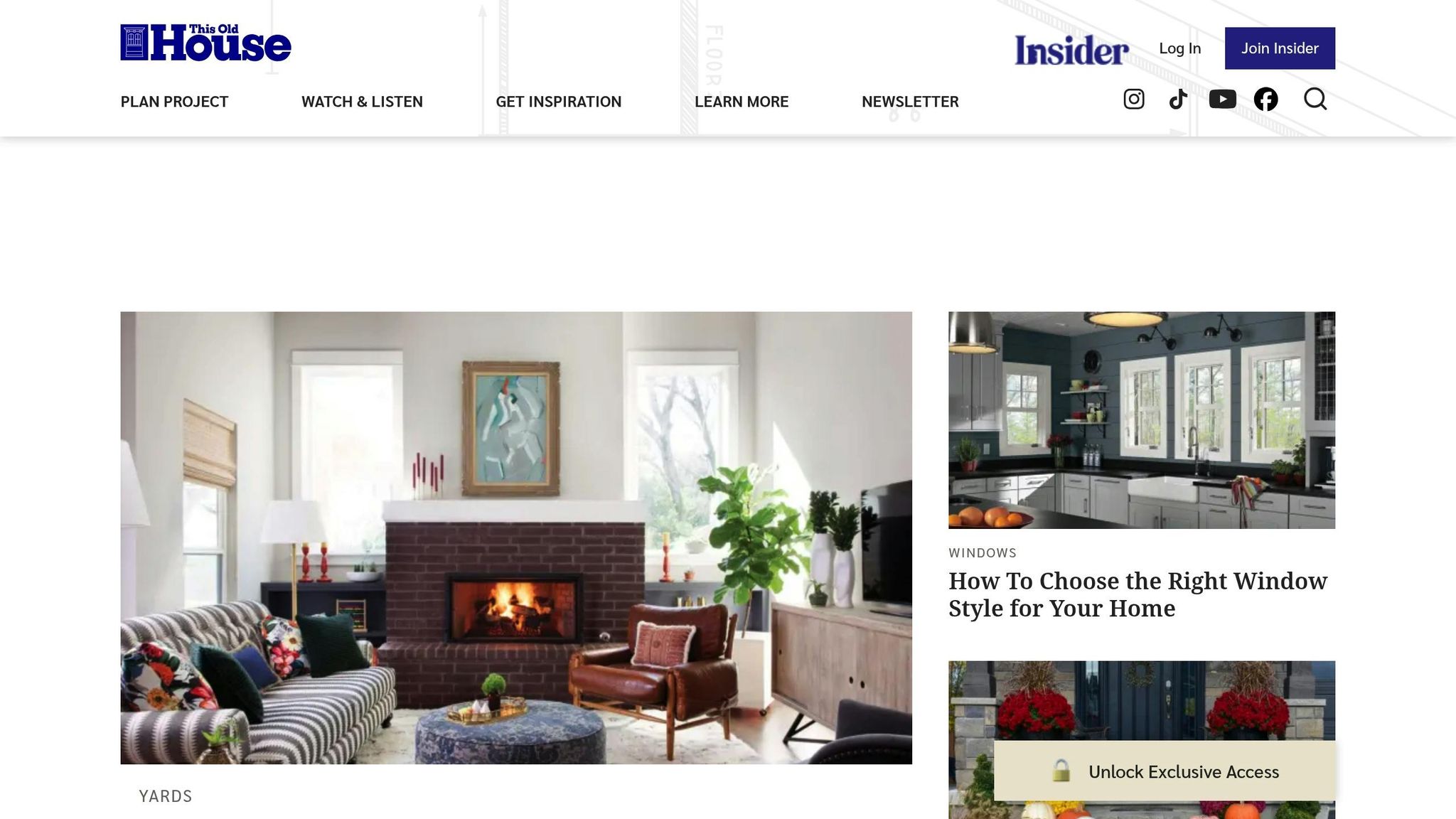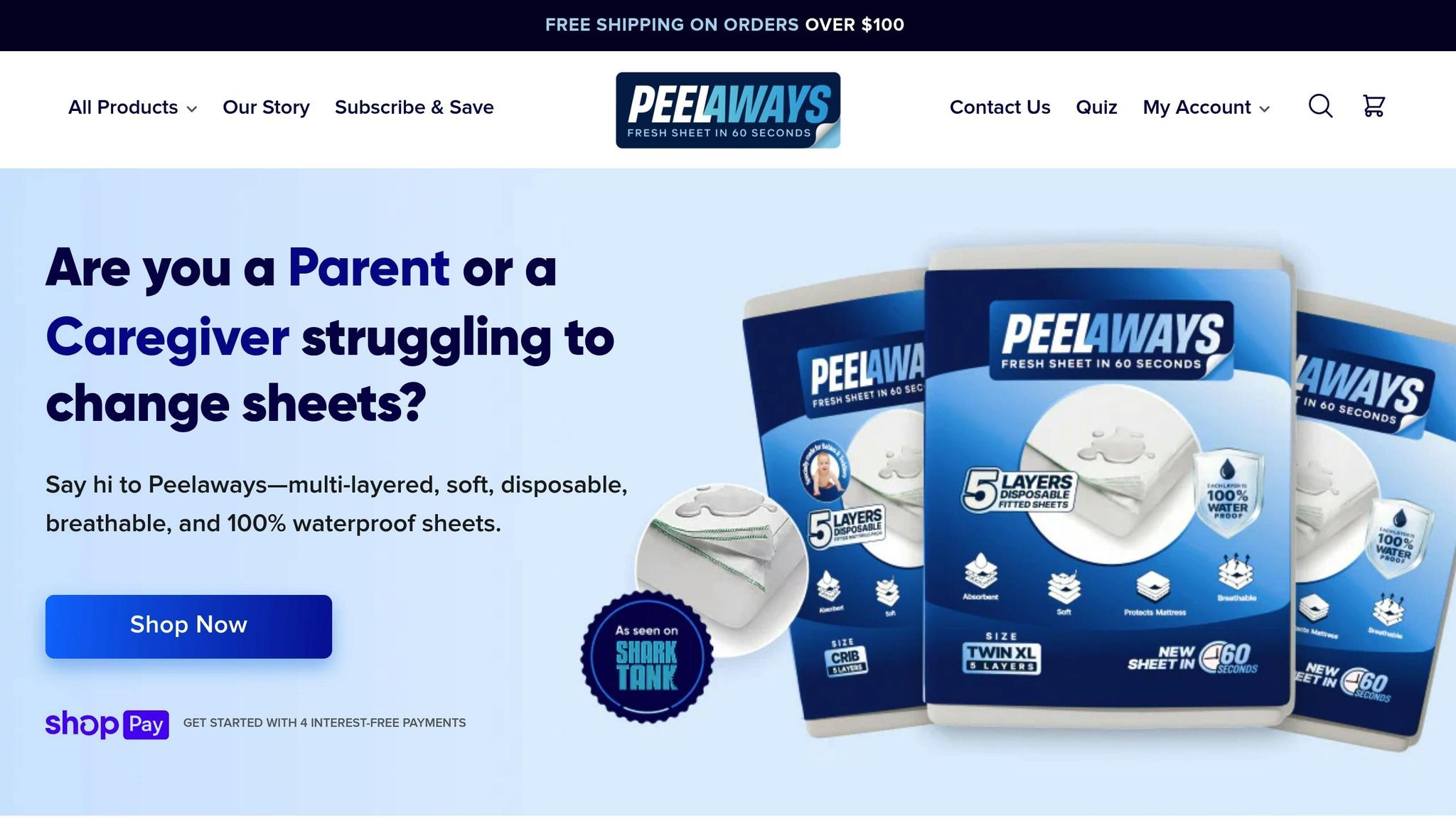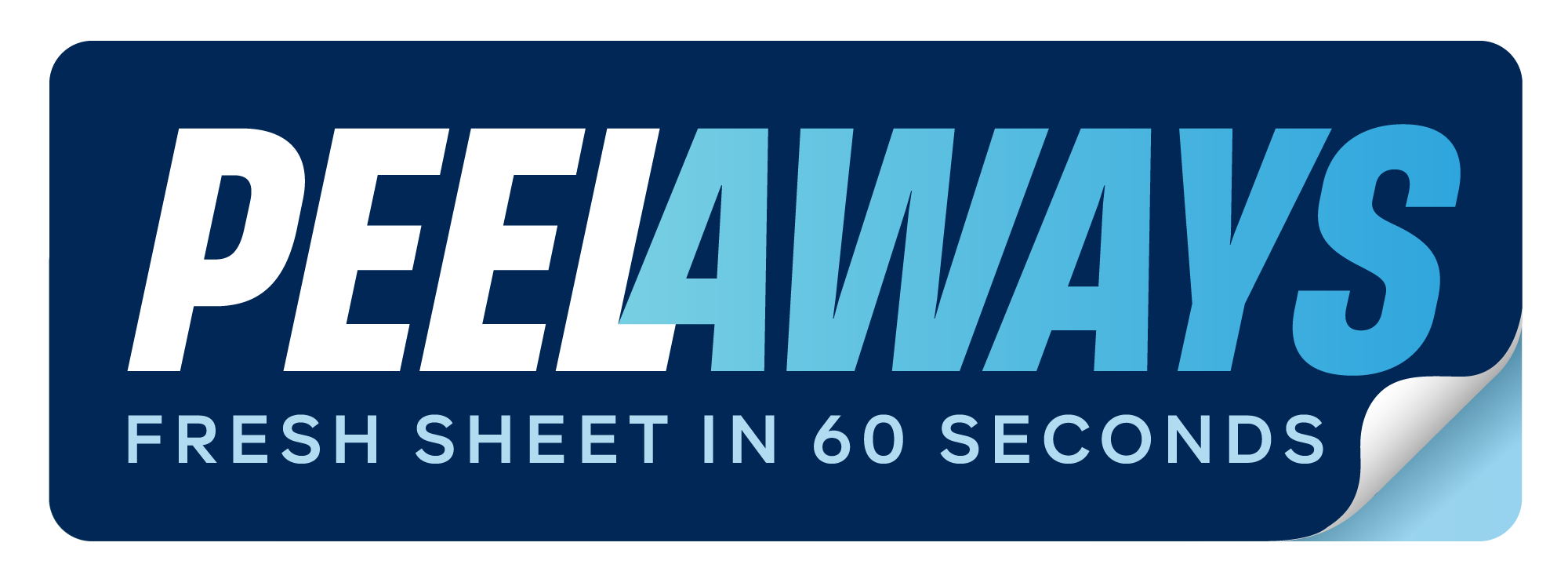Best Practices for Energy-Efficient Ventilation in Care Facilities

Care facilities must balance maintaining clean air with reducing energy use. Modern ventilation systems help by improving air quality, limiting airborne health risks, and saving energy. Here's a quick summary of what works:
- Airflow Management: Systems like variable air volume (VAV) and demand-controlled ventilation adjust fresh air delivery based on occupancy and air quality.
- Filtration: High-efficiency filters (e.g., HEPA) remove harmful particles but require proper maintenance to avoid energy waste.
- Humidity & Temperature Control: Tools like moisture-recovery systems and zoned temperature controls keep spaces comfortable while conserving energy.
- Mechanical vs. Natural Ventilation: Mechanical systems provide precise control, while natural ventilation saves energy in suitable climates.
- Energy Recovery Systems: ERVs and HRVs reuse exhaust air energy, reducing heating and cooling demands.
- Maintenance & Training: Regular system checks and staff training ensure long-term efficiency and safety.
Adding disposable products like PeelAways bed sheets can further reduce contamination risks, complementing ventilation efforts. These sheets eliminate laundry handling, cost $30.99–$53.99, and are available in compostable options. Together, these strategies enhance air quality, safety, and energy efficiency.
How Does Energy Recovery Ventilation Work? | This Old House

Key Components of Energy-Efficient Ventilation Systems
Ventilation plays a crucial role in maintaining health and safety in care facilities, but achieving energy efficiency alongside effectiveness requires a thoughtful approach. By understanding the key elements of these systems, facility managers can balance creating a healthy environment with keeping energy costs in check.
Airflow and Air-Exchange Rates
Airflow is the backbone of any ventilation system. Different spaces demand different air exchange rates: general areas typically need standard rates, while isolation rooms require higher rates to meet strict quality standards. Systems like variable air volume (VAV) and demand-controlled ventilation adjust airflow dynamically based on factors such as occupancy and indoor air quality (e.g., CO₂ levels). This ensures that air exchange remains sufficient while minimizing energy waste.
But managing airflow is only part of the equation - addressing airborne contaminants is equally important.
Filtration and Contamination Control
Effective filtration is essential for removing airborne contaminants in care facilities. Selecting filters involves finding the right balance: filters with higher MERV ratings capture finer particles but may restrict airflow more, while HEPA filters, often used in critical areas, offer superior filtration at the cost of increased energy usage. Regular maintenance, including monitoring differential pressure, ensures filters perform efficiently without driving up energy consumption.
In addition to filtering particles, controlling humidity and temperature is key to optimizing system performance.
Humidity and Temperature Control
Proper humidity management prevents microbial growth and enhances comfort, all while easing the burden on HVAC systems. For instance, moisture-recovery systems can reduce the need for additional humidification in colder climates. Temperature control strategies focus on maintaining consistent, comfortable conditions in resident areas while allowing flexibility in less critical spaces. Tools like zoned temperature control and smart thermostats adjust settings based on occupancy and outdoor conditions, helping to conserve energy and provide actionable insights for further improvements.
When these elements - airflow management, filtration, and humidity and temperature control - work together, they create a unified system where each component enhances the others. This integrated approach ensures high indoor air quality while keeping energy usage efficient, making it a practical solution for care facilities.
Best Practices for Implementing Energy-Efficient Ventilation
To achieve energy-efficient ventilation, it's essential to consider every stage - from design to daily operation. Balancing air quality with energy savings requires careful system choices and precise controls.
Mechanical vs. Natural Ventilation
Choosing the right ventilation strategy is crucial and often depends on the specific needs of the space.
Mechanical ventilation offers precise control over airflow, filtration, and distribution, making it a go-to option for high-risk areas like isolation rooms or spaces where medications are prepared. These systems can integrate with building management systems to automatically adjust settings based on occupancy levels and air quality sensors, ensuring both safety and efficiency.
On the other hand, natural ventilation can be a great energy-saving solution when outdoor conditions are suitable. Facilities in moderate climates may adopt a hybrid approach, utilizing natural ventilation during mild weather and switching to mechanical systems when outdoor air quality declines or temperatures become extreme. However, location plays a significant role. For example, facilities near busy roads, restaurants, or other pollution sources often require more robust mechanical systems with enhanced filtration to maintain air quality [6].
Energy Recovery Ventilators (ERVs) and Heat Recovery Ventilators (HRVs)
ERVs and HRVs are powerful tools for improving ventilation efficiency while maintaining fresh air exchange. These systems work by using energy from exhaust air to pre-condition incoming fresh air, which reduces the load on heating and cooling systems [1][3][4].
- ERVs transfer both heat and moisture between incoming and outgoing air streams, making them ideal for humid climates.
- HRVs focus only on heat transfer, making them better suited for drier environments.
By recovering energy that would otherwise be wasted, these systems lessen the burden on primary HVAC equipment, which is especially important in spaces requiring continuous infection control. When selecting ERVs or HRVs, it's important to tailor the choice to the specific needs of different areas. For instance, common areas might benefit from one type of recovery strategy, while private rooms or clinical spaces may require another.
Maintenance and Staff Training
Even the most advanced ventilation systems won’t perform effectively without regular upkeep and skilled staff to manage them. A proper maintenance routine should include filter replacements, system calibration, and performance checks to ensure both energy efficiency and air quality are maintained [3][6].
Training staff is equally important. Maintenance teams must recognize early signs of inefficiency and understand how to operate smart building technologies, enabling them to make adjustments as conditions change. Continuous monitoring protocols are also essential. Tracking indoor air quality metrics - such as CO₂ levels, volatile organic compounds (VOCs), and particulate matter - can help identify issues early [1][2][5]. While automated systems can handle many adjustments, staff must interpret sensor data to ensure long-term safety and efficiency.
Regular testing and maintenance prevent gradual performance declines that might otherwise go unnoticed until energy bills spike or air quality deteriorates [3][6]. These practices lay the groundwork for more advanced hygiene measures, discussed in the next section.
sbb-itb-45288fe
Additional Measures to Improve Hygiene and Safety
While optimized ventilation is crucial for infection control in care facilities, adding extra hygiene practices can further minimize contamination risks. These measures, when combined with effective ventilation, create multiple layers of protection for both residents and staff.
Reducing Cross-Contamination with PeelAways

Traditional linens often require frequent washing and handling, which can increase the risk of contamination. PeelAways offers a practical alternative with their disposable, waterproof bed sheets. These sheets feature a unique multi-layer peel-away design, providing 5 to 7 soft and absorbent layers depending on the size. Caregivers can simply peel away the top layer when it becomes soiled, revealing a fresh, clean sheet underneath.
This system eliminates the need for lifting mattresses or disturbing air during bed changes, significantly reducing contamination risks. It also removes the need for handling or storing laundry, which are common points of exposure during the cleaning process.
The no cross-contamination design is especially beneficial in care facilities where residents may have weakened immune systems or infectious conditions. PeelAways are available in a variety of sizes, accommodating both toddlers and adults, and are competitively priced.
The sheets are made from a waterproof yet breathable material, ensuring comfort while preventing fluid penetration. This makes them particularly useful in elder care and medical recovery settings, where issues like incontinence or medical procedures pose additional hygiene challenges that ventilation alone cannot address.
By combining disposable solutions like PeelAways with energy-efficient ventilation, facilities can establish a more comprehensive approach to infection control.
Seamless Integration with Infection Control Protocols
For maximum effectiveness, hygiene solutions like PeelAways should be incorporated into broader infection control strategies rather than used in isolation. These disposable sheets complement ventilation systems by reducing the number of contaminated items that need to be handled and removed from patient areas. This minimizes the release of airborne particles during bed changes.
Staff should be trained to remove soiled layers carefully, ensuring minimal particle dispersion and working in sync with ventilation flow. Additionally, disposable systems simplify documentation and monitoring, allowing facilities to make data-informed adjustments to ventilation and filtration in high-use areas.
Integration also extends to waste management practices. PeelAways offer compostable and biodegradable options, aligning with environmentally conscious facility operations. Proper disposal procedures should be coordinated with ventilation systems to ensure waste removal does not compromise air quality in patient spaces.
These measures also strengthen emergency preparedness, enabling facilities to quickly scale up hygiene protocols during outbreaks without overwhelming laundry systems or staff. By working alongside ventilation efforts, these practices help create a safer and healthier environment for everyone.
Conclusion and Key Takeaways
Creating energy-efficient ventilation systems in care facilities requires a careful balance between maintaining air quality, conserving energy, and controlling infections. The most effective approaches combine mechanical ventilation with systems like ERVs (Energy Recovery Ventilators) and HRVs (Heat Recovery Ventilators). These systems help reduce energy consumption while ensuring proper air exchange to maintain a healthy environment.
To keep these systems running smoothly, it's crucial to monitor key ventilation metrics and stick to a regular maintenance schedule.
In addition to ventilation, products like PeelAways disposable bed sheets offer a practical solution to reduce cross-contamination during bed changes. Priced between $30.99 for Crib-A-Peel and $53.99 for King-size options, these multi-layer sheets eliminate the need for traditional linen handling, making care environments safer and more hygienic.
By combining ventilation upgrades with disposable hygiene solutions, facilities can establish multiple layers of protection against pathogens. This approach not only reduces energy costs but also simplifies daily operations, enhancing both safety and efficiency.
For best results, consider a phased approach: begin by improving ventilation systems and training staff, then introduce hygiene measures like disposable sheets. This layered strategy strengthens infection control efforts while maximizing energy efficiency, building on the technical recommendations discussed earlier.
FAQs
How do variable air volume (VAV) and demand-controlled ventilation (DCV) systems save energy in care facilities?
Variable air volume (VAV) systems help cut down on energy use by tailoring airflow to the specific heating or cooling needs of different areas in a care facility. This approach minimizes wasted energy while ensuring a comfortable atmosphere for both residents and staff.
Demand-controlled ventilation (DCV) systems take efficiency a step further by automatically adjusting ventilation rates based on how many people are in a space and the air quality. During times when occupancy is low, these systems reduce airflow, which helps save energy and lowers operational expenses.
When combined, VAV and DCV systems offer a smart way to maintain hygiene, comfort, and energy efficiency in care facilities, all while keeping costs in check.
What are the advantages of using Energy Recovery Ventilators (ERVs) and Heat Recovery Ventilators (HRVs) in different climates?
Energy Recovery Ventilators (ERVs) and Heat Recovery Ventilators (HRVs) are valuable systems for improving air quality and managing energy use in care facilities. However, their effectiveness depends largely on the local climate.
ERVs work best in humid climates. These systems transfer both heat and moisture, which helps keep indoor humidity levels balanced. This makes them particularly helpful in regions where excess moisture can be a challenge, ensuring a comfortable and controlled environment.
HRVs, in contrast, are more suitable for colder and drier climates. They transfer heat while avoiding the introduction of additional moisture. This feature is especially beneficial during winter, as it helps maintain indoor warmth without increasing humidity.
By reducing energy costs and improving indoor air quality, both ERVs and HRVs offer practical solutions for care facilities focused on creating a healthier, more comfortable space for their residents.
How do disposable bed sheets like PeelAways support infection control in care facilities while complementing energy-efficient ventilation systems?
Disposable bed sheets, such as PeelAways, play a key role in infection control within care facilities by offering a fresh, clean surface with every use. Their peel-away, multi-layer design eliminates the need for laundering, which not only reduces the chance of cross-contamination but also ensures a consistently hygienic environment for patients and residents.
When combined with energy-efficient ventilation systems that improve air quality and help limit the spread of airborne pathogens, PeelAways become part of a broader approach to safety and cleanliness. Together, these solutions create a healthier space for both caregivers and those under their care.
Related Blog Posts
- Checklist for Infection Control in Shared Living Spaces
- How Disposable Sheets Reduce Cross-Contamination
- How Moisture-Wicking Sheets Help Prevent Bed Sores
- FAQs About Anti-Slip Bedding for Patients
Comments
0

SAVE MONEY & WATER
Professionals & Institutions save a fortune on labor/laundry.

SUPERIOR COMFORT
The first thing our customers notice is how soft our sheets are.

100% WATERPROOF
Each layer is 100% Waterproof, perfect for spills and accidents

SAVE TIME
Change the sheet in under 1 minute without stripping the bed.




Leave a comment